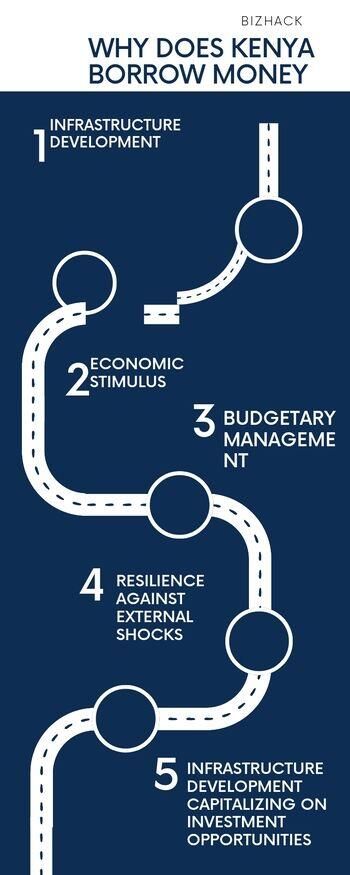Last updated on September 4th, 2023 at 01:52 am
This article thoroughly answers the question why does Kenya borrow money. Kenya, known for its breathtaking landscapes and diverse wildlife, is also a country that frequently makes headlines for its borrowing activities. Over the years, Kenya has borrowed substantial sums of money from various sources, both domestically and internationally. This has led many to question why a country with immense natural resources and a thriving tourism industry needs to rely on external borrowing. In this blog post, we will delve into the reasons behind Kenya’s borrowing and shed light on the dynamics of its economic growth.
The Answers: Why does kenya borrow money
1. Infrastructure Development
One of the primary reasons Kenya borrows money is to fund infrastructure development projects. As a developing country, Kenya recognizes that the growth of its economy is closely tied to the quality and extent of its infrastructure. To foster economic growth, Kenya has embarked on ambitious projects such as expanding transportation networks, constructing modern ports, building power plants, and improving water supply systems. However, these projects require significant financial investments that exceed the government’s available funds, hence the need for borrowing.
2. Economic Stimulus and Job Creation
Borrowing money can also be seen as a means to stimulate economic growth and create employment opportunities. By investing in various sectors, such as agriculture, manufacturing, and technology, Kenya aims to boost its productivity and create jobs for its growing population. These investments can lead to increased tax revenues and greater economic activity, ultimately helping to repay the borrowed funds.
3. Budgetary Gaps and Fiscal Management
Kenya’s borrowing is often driven by budgetary gaps and the need to manage its fiscal deficits. Like many other countries, Kenya faces challenges in balancing its budget due to factors such as unpredictable revenue streams, infrastructure demands, and social welfare commitments. Borrowing allows the government to bridge the gap between its income and expenditure, enabling it to continue providing essential services and investing in critical areas while maintaining stability in the economy.
4. External Shocks and Economic Resilience
Another reason for Kenya’s borrowing is to build economic resilience against external shocks. Developing nations like Kenya are vulnerable to global economic fluctuations, commodity price fluctuations, and natural disasters. By borrowing, Kenya can create a buffer to absorb the impacts of these shocks and maintain stability in its economy. It provides a safety net that allows the government to respond effectively to crises without jeopardizing essential services or impeding long-term development plans.
5. Capitalizing on Investment Opportunities
Borrowing can also be seen as a strategic move to seize investment opportunities. Kenya, with its favorable investment climate and entrepreneurial spirit, aims to attract both domestic and foreign investors. By borrowing, the government can provide the necessary infrastructure and support systems to facilitate business growth and attract investments. This, in turn, contributes to economic expansion, job creation, and overall prosperity.
Here’s the bottom line answering question: why does Kenya borrow money
Kenya’s borrowing activities are driven by a combination of factors, including infrastructure development, economic stimulus, budgetary management, resilience against external shocks, and capitalizing on investment opportunities. While it is essential for the government to maintain fiscal discipline and manage debt responsibly, borrowing can serve as a catalyst for economic growth and development. By strategically investing borrowed funds in critical sectors, Kenya aims to transform its economy, improve the standard of living for its citizens, and position itself as a competitive player on the global stage.
